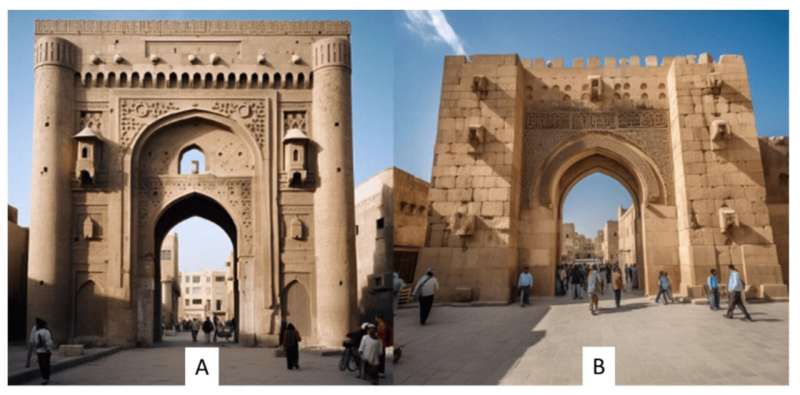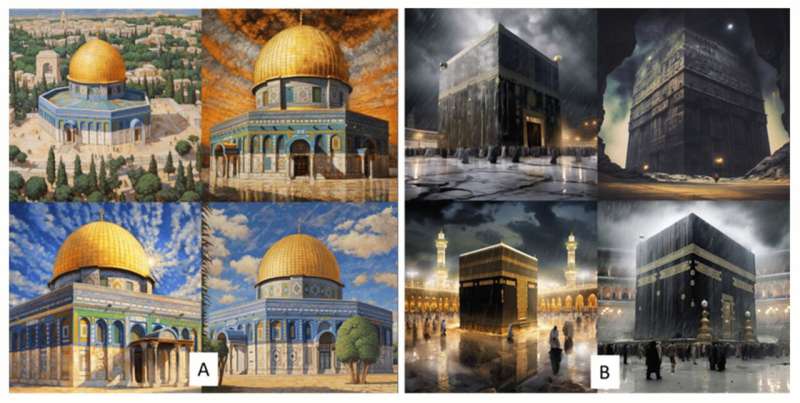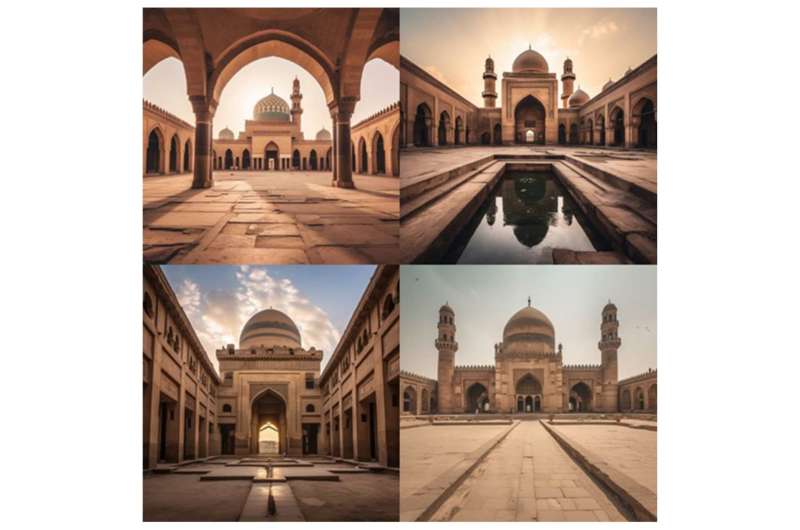
Images generated by Artificial Intelligence (AI) have revolutionized architectural design processes, offering architects the agility to produce highly sophisticated and imaginative designs.
However, in spheres immersed with culture, sensitivity and religion as in the case of Islamic architecture, AI-generated depictions usually fail to correctly present the nuanced understanding of historical Islamic elements and their interpretations, according to research published in the journal Buildings.
"In recent years, the widespread adoption of AI-image generators like Stable Diffusion and Midjourney have revolutionized architectural design processes, offering architects the ability to produce sophisticated and imaginative designs," says the research's main author Dr. Ahmad W. Sukkar, a scientist at Sharjah University's Department of Architectural Engineering.
However, and despite AI's potential for innovative design outcomes, "many examples found online reveal a blending of limited historical knowledge with inadequacies in the datasets used by AI image generators. In fields as culturally and historically sensitive as Islamic architecture, the integration of AI technology requires careful consideration."
AI models like Stable Diffusion and Midjourney claim to excel in creating artistic and architectural images and designs with nuanced qualities rich in texture and detail in addition to their ability to create stylized content and realistic visual imagery. They assist artists and architects to produce unique photorealistic images from text and image prompts.

The authors acknowledge that AI tools are capable of generating designs inspired by traditional Islamic architecture styles, but at the same time believe that navigating the intersection of AI and Islamic architecture presents architects with both opportunities and challenges.
They write, "AI image generators can be a valuable tool in the design process of Islamic architecture; however, it is necessary to use them cautiously. While AI can offer new possibilities and inspiration, it needs to be supported by human expertise and a deep understanding of the principles and traditions of architecture in the Islamic context.
"The human touch, craftsmanship, and cultural sensitivity integral to architecture in this context should be preserved and not be overlooked. Striking a balance is crucial, and AI should be seen as an advanced tool to augment human creativity rather than replace it entirely.
"AI-generated images may not capture the intangible aspects of heritage, such as cultural practices, rituals, or oral traditions, as these often go beyond empirical perception and encompass symbolic dimensions. In its current development stage, AI struggles to fully capture the depth and complexity of these elements, which are often intertwined with personal and subjective experiences."
On the thrust of their research, Sukkar says, "Our research delved into the intriguing intersection of artificial intelligence (AI) and Islamic architecture, exploring how AI technologies can generate images of Islamic architectural heritage. Our investigation reveals both the immense potential and significant limitations of these AI systems.

"Through careful examination and comparison with historical sources, we have identified several factors that contribute to these discrepancies, including limitations in the prompt used to generate the images, challenges in accurately capturing regional and historical styles, and difficulties with architectural elements and details."
More information: Ahmad W. Sukkar et al, Analytical Evaluation of Midjourney Architectural Virtual Lab: Defining Major Current Limits in AI-Generated Representations of Islamic Architectural Heritage, Buildings (2024). DOI: 10.3390/buildings14030786
Ahmad W. Sukkar et al, Artificial Intelligence Islamic Architecture (AIIA): What Is Islamic Architecture in the Age of Artificial Intelligence?, Buildings (2024). DOI: 10.3390/buildings14030781
Citation: AI images fail to depict cultural nuances of Islamic architecture, research shows (2024, June 17) retrieved 17 June 2024 from https://techxplore.com/news/2024-06-ai-images-depict-cultural-nuances.html
This document is subject to copyright. Apart from any fair dealing for the purpose of private study or research, no part may be reproduced without the written permission. The content is provided for information purposes only.
